The wealth management industry is undergoing a significant transformation with the adoption of AI-powered intelligent bots. These bots play a crucial role in automating client interactions, personalizing services, and improving scalability. This blog explores how wealth management firms can leverage intelligent bots to enhance prospect identification, engagement, and overall customer experience.
The wealth management industry is transforming significantly, majorly due to the rapid evolution and adoption of artificial intelligence (AI) technologies. This evolution involves both assets and algorithms— algorithms that fuse wealth and asset management with artificial intelligence and data analytics.
Wealth management, which has historically been linked to personal relationships between individuals and expert financial advisors, is becoming more automated and data-driven. Among these, AI-powered intelligent bots are on the rise.
The global chatbot market is expected to rise beyond $994 million by the end of 2024 – [source]. By 2027, chatbots will become the primary customer service channel for roughly a quarter of organizations, according to Gartner, Inc.
This blog presents the crucial role of intelligent bots in wealth management and how financial services firms use them to identify and engage with prospects, boosting revenue and customer experience.
The Role of Intelligent Bots in Wealth Management
Intelligent bots, often powered by conversational AI/machine learning (ML) algorithms and large language models (LLM), are designed to mimic human interactions and perform tasks that typically require human intelligence.
Wealth management companies can use these bots across the client lifecycle—from initial prospecting and onboarding to ongoing engagement, service delivery, support, and renewals.
1. Identifying New Prospects
Identifying high-potential prospects has always been a key challenge in wealth and asset management.
Intelligent bots can address this challenge by leveraging data analytics and AI to analyze large datasets, identify patterns, and predict which individuals or businesses would likely need wealth management services.
These bots can scan social media, financial news, and other online platforms to gather insights into potential clients’ financial activities, life events, and investment behaviors.
PwC estimates that by 2027, the assets under the management of robo-advisers will rise to an astounding $5.9 trillion, more than twice as much as in 2022 ($2.5 trillion).
For instance, bots can monitor events such as a business sale, inheritance, or a significant market transaction, which might indicate a need for wealth management services. By automating this process, wealth managers can efficiently build a pipeline of qualified leads without the manual effort traditionally required.
2. Engaging with Prospects
Once potential prospects are identified, intelligent bots can engage them through personalized communication strategies and help qualify leads by asking relevant questions and directing the potential customer or client to the sales team for conversion.
They also help enhance the capabilities of human advisors and create more of a bionic advisor that leverages AI, data analytics, and personalized service to engage with the prospects, which helps ensure trust and psychological connection.
By utilizing advanced Natural Language Processing (NLP) and Natural Language Understanding (NLU) technologies, these bots can initiate contextually relevant conversations tailored to the individual’s financial situation and needs, schedule appointments if the team or human advisor is not available, and enable your potential clients to make a quicker and more informed decision. Also, they can work 24×7.
For example, a bot might reach out to a prospect with a message acknowledging a recent financial milestone and offering insights into investment strategies that could help manage new wealth.
This proactive engagement helps position the wealth management firm as attentive and client-focused. It also significantly increases the chances of converting the prospect into a client.
Benefits of Intelligent Bots in Prospect Engagement
The adoption of intelligent bots in wealth management provides several key benefits, including:
1. Scalability
Unlike humans, intelligent bots can handle a vast number of client queries and interactions simultaneously without experiencing fatigue or overload.
They make it possible to engage with more prospects and handle a larger number of clients and their queries faster and better than a human team could manage. They do this by asking relevant questions and directing the clients or customers to the respective sales team, ensuring no potential lead is left unattended.
2. Personalization
With the help of data analytics, intelligent bots can deliver highly personalized responses and messages that resonate with prospects on an individual level.
This potentially increases the likelihood of converting leads into sales by enabling relevant and timely interactions.
3. Efficiency
Intelligent bots can automate repetitive or routine tasks, including initial prospect outreach and follow-ups.
This capability helps free up human advisors, allowing them to focus on more complex, high-value interactions with prospects and clients.
4. Cost-Effectiveness
Implementing bots can reduce operational costs associated with customer acquisition and engagement. Since bots can operate 24/7 without breaks, they provide consistent service at a fraction of the cost of human labor. They can provide quick and timely responses to customer queries and help reduce the average handling time for each interaction.
Besides, these intelligent bots are designed to provide accurate and consistent information to the customer, which helps minimize errors or misinformation, avoiding costly mistakes or customer escalations.
Real-World Applications of Intelligent Bots
Below are some practical applications of intelligent bots in wealth management from identifying and engaging with new prospects to boosting customer trust, experience, and retention.
1. Customer Onboarding
Intelligent bots are used by banks and financial institutions, including wealth and asset management firms to automate customer onboarding processes.
What these bots do is that they:
- Initial communications
- Collect and verify necessary documents
- Anti-money laundering checks
- Risk profiling
- Guide new clients through the setup of their accounts
- Introduce them to the wealth management portal’s features
Automations like these help streamline the onboarding process and make the entire process much faster and more efficient.
For instance, Deutsche Bank Wealth Management has started implementing the KYC Solution, an AI-enabled system with multi-language and natural language processing capabilities, to verify customer identities. This solution examines unfavorable news and compiles the background information about present and future customers. It gathers, summarizes, and classifies data according to its pertinence and level of risk in order to create thorough profiles for these clients.
2. Financial Advisory Services
Traditionally, financial advisory services were deemed exclusive and often involved high fees. Intelligent bots have shifted this landscape which are now used to provide rule-based and two-way communication-driven financial advice. These can be called or referred to as Robo Advisors.
The robo-advisors market is expected to grow to 234.3 million customers by 2027, according to Statista.
For example, a bot might send out newsletters containing market updates or offer tailored investment advice based on the prospect’s financial goals and risk tolerance. This way, financial experts and advisors can deliver automated, algorithm-driven investment advice and top-tier personalized financial guidance at an affordable price via messaging platforms like WhatsApp, or through mobile apps, websites, etc. That too at a scale, enabling them to focus on more strategic aspects of investment and strategies for enhancing client satisfaction and retention.
3. Fraud Prevention and Risk Management
Intelligent bots are equipped with predictive analytics and anomaly detection algorithms to prevent and mitigate fraud risk.
Since these bots can work 24×7, they can help continuously analyze client data to identify unusual patterns, user behavior, location data, transaction patterns, etc., indicative of any potentially fraudulent activities. They also can learn from historical data and real-time data and adapt to the evolving tactics used by threat actors or cyber criminals.
This way, wealth and asset management firms can protect customers and themselves from potential risks.
Conclusion
Intelligent bots are revolutionizing the way wealth management firms identify and engage with new prospects. They help automate data analysis, personalize client interactions, and provide scalable solutions to improve customer acquisition and retention. With the rapid evolution of emerging technologies, such as AI, the role of bots in wealth and asset management is likely to expand.
For wealth management firms looking to stay competitive and considering investment in intelligent bot technology to enhance their prospecting efforts, improve client engagement, and drive long-term growth, contact us at info@anaptyss.com to learn more.


















